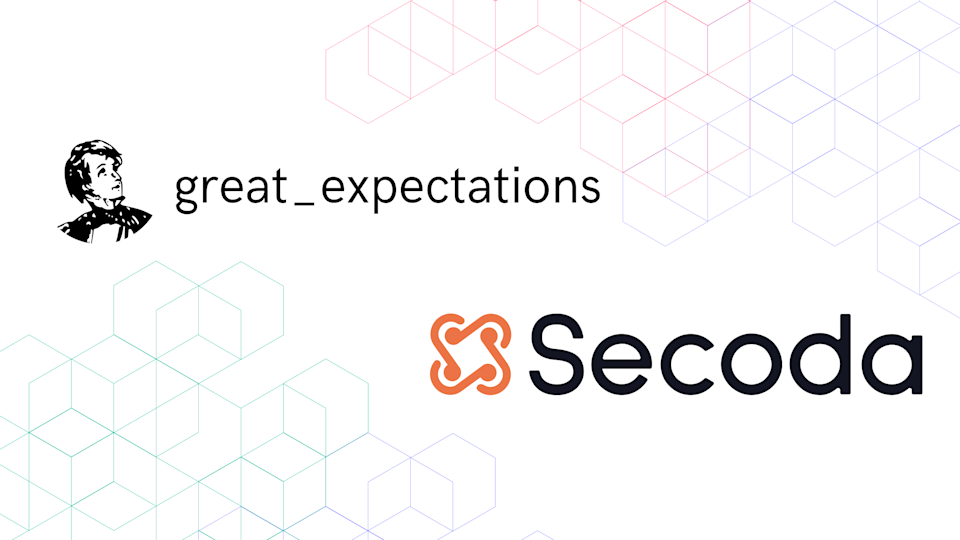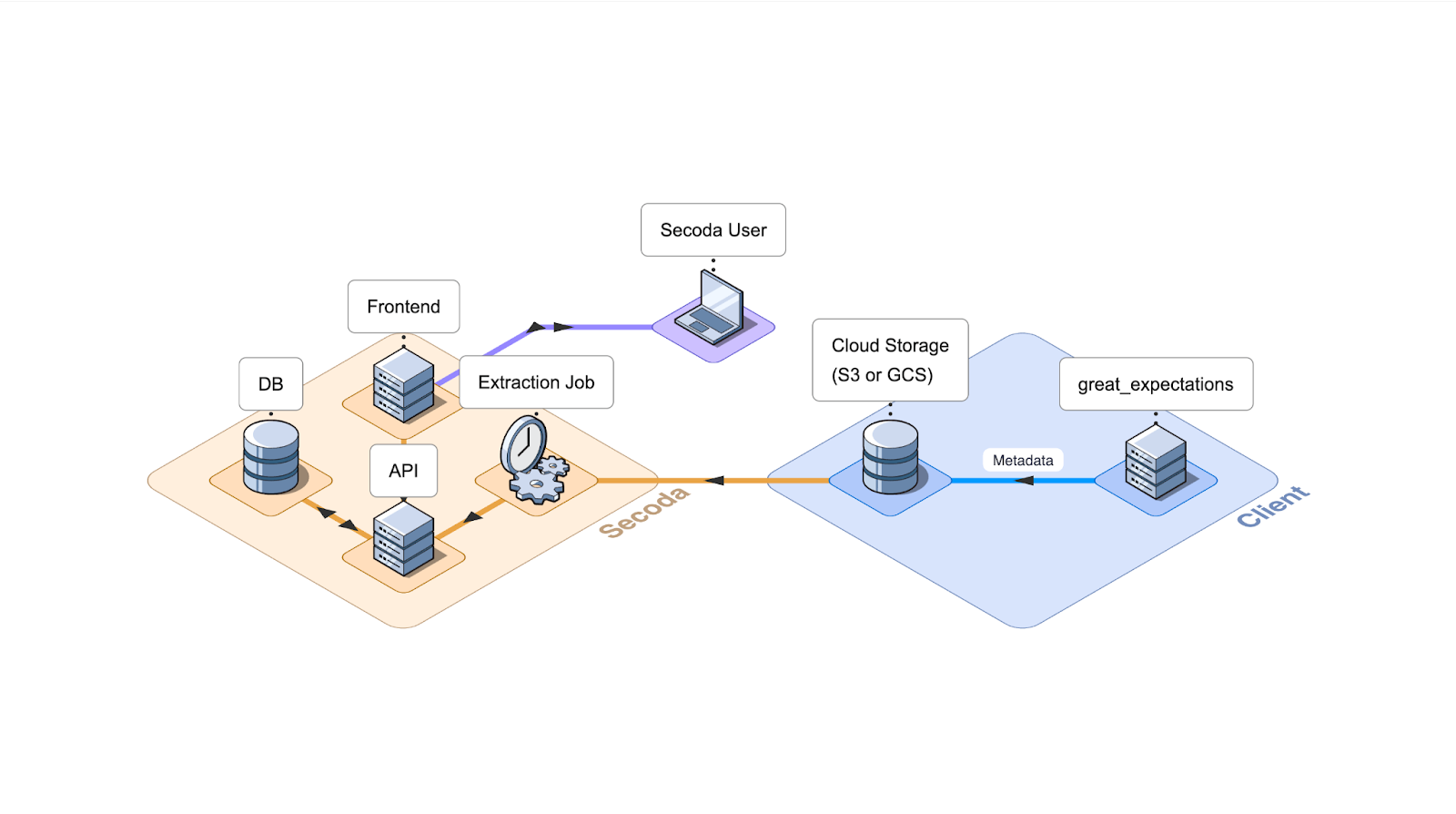
Is your data quality solution working?
A data quality solution can be measured by the mistakes it prevents. Pipeline tests serve as a gate on new data before it propagates into dashboards. If those tests don’t pass, low-quality data doesn’t get into the hands of stakeholders.
Looping in stakeholders can’t stop there. The poor data might be intercepted at the source, but people using downstream dashboards won’t know that the dashboard data is stale unless you put effort into communication.
That’s where Secoda comes in. It’s an all-in-one knowledge repository that democratizes data knowledge and lineage. And now, that can include Great Expectations data quality tests.
The importance of communicating data quality
Let’s dive further into the analytics team and stakeholder relationships.
Analytics teams have the most context for the data itself because they spend all day analyzing it. With that context comes a granular understanding of what poor data quality means for both them and adjacent business teams. This background is then encoded into pipeline tests, versioned, and run within a data pipeline.
Even with this type of data testing, data trust can still break down internally; for example, a stakeholder might ask the analytics team why dashboards haven’t updated since last night.
This is where data discovery comes in. As the center of so much context, it’s the analytics team's responsibility to share that context with everyone else.
An essential part of that context relates to data quality: Which data assets are reliable? If assets are unreliable, why is that? Are upstream operations contributing to unreliability? Which downstream dashboards are fully up-to-date?
Data cataloging tools act as centralized repositories for all of this knowledge. Using data catalogs, teams can communicate effectively about data quality issues and who's in charge of solving them.
Integrating pipeline tests into business operations
Great Expectations allows data engineers and data scientists alike to write unit tests for data. As part of the open source package, both the Expectations as the tests themselves and the Validations run against the tests are put into data documentation (or Data Docs). You can read more about Data Docs here.
Ultimately, for Data Docs to be useful they need to be exposed, shared, and understood. And what better place is there to make stakeholders aware of data quality than in a centralized data discovery tool?
The Great Expectations integration with Secoda allows all users to see the latest validation result for any data asset. Secoda will automatically notify owners of data assets that are affected by upstream failed Expectations.
With automated lineage, data quality can be easily communicated across team boundaries by implementing automated response actions in Secoda when a Great Expectations test fails.

Access to data quality information empowers stakeholders to trust the data their decision-making is based on. And an organization can only move confidently if there’s mutual trust between data and business teams.
It all starts with data quality.
Getting started with Great Expectations and Secoda
If you’re struggling to find a way to improve the understanding of data quality across your organization, Great Expectations integrated with Secoda can help. You can enable your data teams to implement unit tests that all stakeholders can easily reference.
To use this integration, reference the Great Expectations documentation here.



